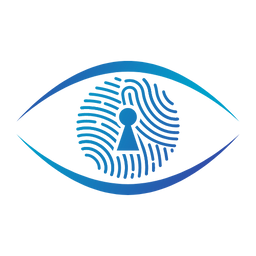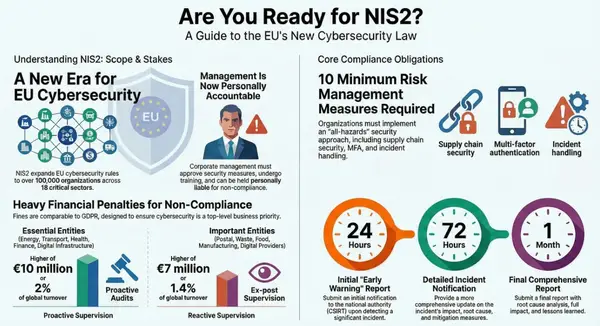Meta's Rejection of EU AI Code of Practice: Implications for Global AI Compliance Frameworks

Executive Summary
In a significant development for AI governance, Meta Platforms announced it will not sign the European Union's artificial intelligence code of practice, calling it an overreach that will stunt growth. This decision, made public by Meta's Chief Global Affairs Officer Joel Kaplan, highlights the growing tension between regulatory frameworks and industry compliance approaches in the rapidly evolving AI landscape.
The voluntary code of practice, drawn up by 13 independent experts, aims to provide legal certainty to signatories who will have to publish summaries of the content used to train their general-purpose AI models and put in place a policy to comply with EU copyright law. Meta's refusal stands in stark contrast to other major tech companies, with Microsoft likely to sign the code of practice, creating a divergent compliance landscape.
The EU AI Act and Code of Practice Framework
Legal Foundation and Enforcement Timeline
The EU AI Act, which came into force in June 2024, represents the world's first comprehensive AI regulation. The act classifies AI applications into risk categories — unacceptable, high, limited and minimal — and imposes obligations accordingly. Any AI company whose services are used by EU residents must comply with the act. Fines can go up to 7% of global annual revenue.
The enforcement timeline is particularly crucial for compliance teams:
- August 2, 2025: Deadline for companies to place models on the market to benefit from extended compliance periods
- August 2, 2026: The Commission will enforce full compliance with all obligations for providers of general-purpose AI models with fines
- August 2, 2027: Models placed on the market before August 2025 must comply with the AI Act obligations
Code of Practice Benefits and Requirements
AI model providers who voluntarily sign the code can show they comply with the AI Act by adhering to the Code. This will reduce their administrative burden and give them more legal certainty than if they proved compliance through other methods. However, companies that refuse to sign, like Meta, may be exposed to more regulatory scrutiny.
Key requirements under the code include:
- Publishing summaries of training data content
- Implementing EU copyright law compliance policies
- Addressing transparency, safety, and security issues
- Meeting specific obligations for general-purpose AI models with systemic risks
Meta's Position and Industry Implications
Rationale for Non-Compliance
Meta's global affairs chief Joel Kaplan stated that "Europe is heading down the wrong path on AI," characterizing the code as an overreach that will stunt growth. This position reflects broader industry concerns about regulatory burden and innovation constraints.
Compliance Risk Assessment
Organizations following Meta's approach face significant compliance risks:
- Financial Penalties: Companies that violate the AI Act can face hefty penalties. The European Commission can impose fines of up to seven percent of a company's annual sales. The penalties are a lower three percent for those developing advanced models
- Increased Regulatory Scrutiny: Non-signatories may face more intensive oversight and compliance verification requirements
- Market Access Challenges: Potential restrictions on AI service deployment within EU markets

Comparative Analysis of Global AI Frameworks
NIST AI Risk Management Framework (AI RMF 1.0)
The United States National Institute of Standards and Technology has developed a comprehensive approach to AI risk management. The AI RMF follows the template of previous information risk management and governance frameworks from NIST, the Cybersecurity Framework released in 2014 and a Privacy Framework released in 2020.
Key characteristics of NIST AI RMF:
- Voluntary Framework: Similar to other NIST frameworks, providing guidance rather than mandatory requirements
- Risk-Based Approach: Focuses on identifying, assessing, and managing AI risks throughout the lifecycle
- Flexible Implementation: Allows organizations to tailor approaches based on their specific context and risk tolerance
- Cross-Sector Applicability: Designed for use across various industries and organizational types

ISO/IEC AI Standards Suite
The International Organization for Standardization has developed a comprehensive suite of AI-related standards:
ISO/IEC 42001:2023 - AI Management Systems
ISO 42001 establishes an AI Management System focusing on ethical AI, transparency, and trust, providing a structured approach to AI governance within organizations.
ISO/IEC 23053 - AI Framework for ML Technology
ISO/IEC 23053 establishes an AI and machine learning (ML) framework for describing a generic AI system using ML technology, offering standardized terminology and concepts.
ISO/IEC 23894:2023 - AI Risk Management Guidance
ISO/IEC 23894 provides guidance on AI-related risk management, complementing the management system approach with specific risk management practices.

Framework Comparison Analysis
Key points of comparison include: Scope and Coverage: ISO/IEC standards provide comprehensive guidelines across a broad range of AI-related topics, while NIST AI RMF is more focused on risk management. Global Applicability: ISO/IEC standards are internationally recognized and widely adopted.
| Framework | Jurisdiction | Mandatory/Voluntary | Focus Area | Key Advantages |
|---|---|---|---|---|
| EU AI Act | European Union | Mandatory | Risk-based regulation | Legal certainty, market access |
| NIST AI RMF | United States | Voluntary | Risk management | Flexibility, industry acceptance |
| ISO/IEC 42001 | International | Voluntary | Management systems | Global recognition, certification |
| ISO/IEC 23894 | International | Voluntary | Risk management | Standardized approach |
Strategic Compliance Recommendations
For Organizations Operating in Multiple Jurisdictions
- Adopt a Harmonized Approach: Implement frameworks that can satisfy multiple regulatory requirements simultaneously
- Prioritize Risk-Based Compliance: Focus on high-risk AI applications that face the most stringent requirements
- Establish Cross-Border Governance: Create governance structures that can adapt to varying regulatory requirements

For EU Market Participants
- Evaluate Code of Practice Participation: Consider the benefits of voluntary compliance versus independent compliance demonstration
- Implement Comprehensive Documentation: Ensure training data summaries and copyright compliance policies are robust
- Prepare for Enforcement: Develop systems to demonstrate compliance ahead of August 2026 enforcement deadline
For Global AI Developers
- Monitor Regulatory Evolution: Stay informed about emerging regulations in key markets
- Invest in Compliance Infrastructure: Build systems that can scale across multiple regulatory frameworks
- Engage with Standard-Setting Bodies: Participate in the development of international standards

Future Outlook and Emerging Considerations
Regulatory Fragmentation Risks
Meta's decision highlights the risk of regulatory fragmentation, where different jurisdictions impose incompatible requirements. This could lead to:
- Increased compliance costs for global AI developers
- Potential market segmentation based on regulatory approaches
- Innovation constraints due to conflicting requirements
Convergence Opportunities
Despite current divergences, opportunities for regulatory convergence exist:
- International standards development through ISO/IEC
- Bilateral cooperation agreements between regulators
- Industry-led initiatives for common compliance approaches
Technology Evolution Impact
Rapid AI technology advancement continues to outpace regulatory development:
- Emergence of new AI capabilities requiring updated frameworks
- Need for adaptive regulatory approaches
- Importance of future-proofing compliance strategies

Conclusion
Meta's rejection of the EU AI Code of Practice represents a critical juncture in AI governance, highlighting the tension between regulatory compliance and innovation concerns. Organizations must navigate an increasingly complex landscape of mandatory and voluntary frameworks while maintaining operational efficiency and competitive advantage.
The divergent approaches of major tech companies—with Microsoft likely to sign while Meta refuses—underscore the need for careful strategic consideration of compliance approaches. Success in this environment requires:
- Comprehensive understanding of applicable frameworks
- Strategic evaluation of compliance options
- Robust risk management processes
- Adaptive governance structures
As AI regulation continues to evolve globally, organizations that proactively address compliance requirements while maintaining innovation capacity will be best positioned for long-term success. The choice between voluntary code participation and independent compliance demonstration will become increasingly strategic, with implications extending beyond regulatory compliance to competitive positioning and market access.
The ongoing development of international standards through ISO/IEC and frameworks like NIST AI RMF provides valuable tools for organizations seeking to harmonize their compliance approaches across jurisdictions. However, the ultimate success of these efforts will depend on industry adoption and regulatory acceptance of common approaches to AI governance.

This analysis reflects the current state of AI compliance frameworks as of July 2025. Organizations should consult with legal and compliance professionals for specific guidance on their regulatory obligations.












